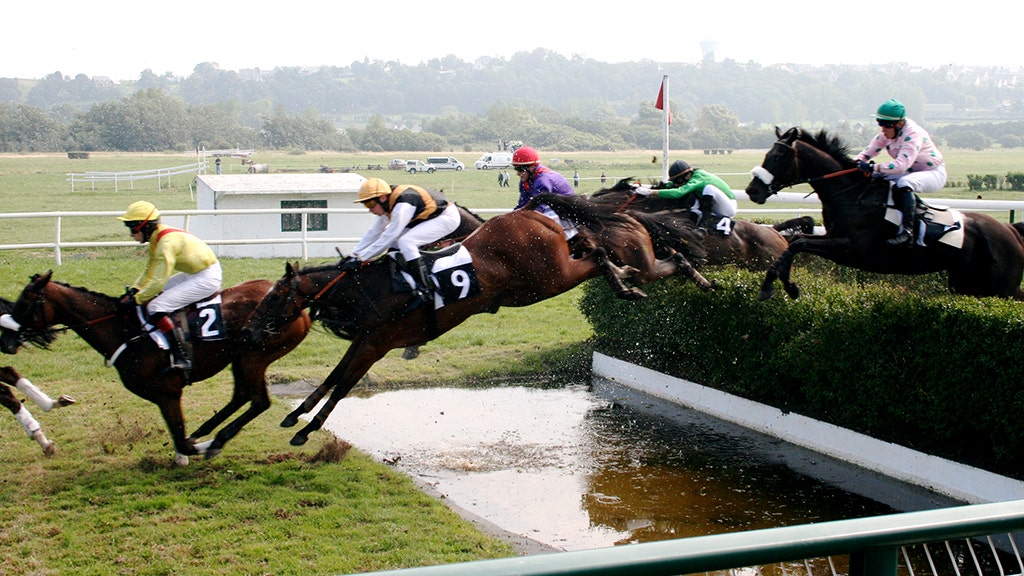Prevention and Response: Steeplechase Fall

Steeplechase falls are a serious concern for both horse and rider. Understanding the factors contributing to these falls and implementing effective prevention strategies is crucial for ensuring the safety of participants. This section will delve into the key factors that contribute to steeplechase falls, provide a step-by-step guide on how to prevent them, and discuss the role of training and experience in mitigating fall risks. It will also Artikel the appropriate response procedures for a steeplechase fall involving both horse and rider.
Factors Contributing to Steeplechase Falls
Steeplechase falls can be attributed to a multitude of factors, including:
- Horse-Related Factors:
- Inexperience or lack of training in jumping over obstacles.
- Physical limitations or injuries that affect the horse’s ability to jump safely.
- Behavioral issues, such as nervousness or lack of focus.
- Poor shoeing or improper equipment.
- Rider-Related Factors:
- Inexperience or lack of training in steeplechase riding techniques.
- Poor riding position and balance, which can lead to instability during jumps.
- Lack of communication and coordination with the horse.
- Overconfidence or taking unnecessary risks.
- Course-Related Factors:
- Obstacles that are poorly designed or maintained.
- Inadequate course conditions, such as slippery surfaces or uneven terrain.
- Insufficient safety measures, such as inadequate fencing or lack of medical personnel.
- Environmental Factors:
- Weather conditions, such as rain, wind, or extreme temperatures.
- Crowds and noise, which can distract both horse and rider.
Preventing Steeplechase Falls
Preventing steeplechase falls requires a comprehensive approach that addresses all contributing factors. Here is a step-by-step guide to help mitigate fall risks:
- Horse Preparation:
- Ensure horses are adequately trained and experienced in jumping over obstacles.
- Regularly assess horses’ physical condition and address any potential limitations or injuries.
- Implement a comprehensive training program that focuses on building strength, stamina, and jumping technique.
- Properly shoe and equip horses with appropriate gear.
- Rider Preparation:
- Obtain proper training and experience in steeplechase riding techniques.
- Develop a strong riding position and balance that allows for stability during jumps.
- Practice effective communication and coordination with the horse.
- Develop a sound understanding of course layout and obstacle design.
- Course Safety:
- Ensure obstacles are well-designed, properly maintained, and safe for both horse and rider.
- Maintain course conditions, including surfaces and terrain, to ensure optimal safety.
- Implement adequate safety measures, such as fencing, medical personnel, and emergency protocols.
- Environmental Considerations:
- Avoid riding in extreme weather conditions or when visibility is poor.
- Minimize distractions from crowds and noise during competitions.
Role of Training and Experience, Steeplechase fall
Training and experience play a pivotal role in mitigating fall risks in steeplechase.
“Training and experience are the cornerstones of safety in steeplechase. They equip both horse and rider with the necessary skills and knowledge to navigate the challenges of the sport.”
Adequate training provides horses with the physical and mental preparedness to jump safely over obstacles. Riders, in turn, develop the skills and judgment required to guide their horses effectively and minimize risks. Experienced riders can better anticipate potential hazards and react appropriately to unexpected situations.
Response Procedures for Steeplechase Falls
In the event of a steeplechase fall, prompt and appropriate response procedures are crucial for the well-being of both horse and rider. The following table Artikels the key steps involved:
| Step | Horse | Rider |
|---|---|---|
| 1. Assess the Situation | Check for immediate injuries, such as broken limbs or lacerations. | Check for consciousness, breathing, and signs of head or spinal injuries. |
| 2. Secure the Area | Remove the horse from the immediate area to prevent further injury. | Ensure the rider is safe and away from the horse. |
| 3. Provide First Aid | Administer first aid as necessary, such as applying pressure to bleeding wounds or stabilizing broken limbs. | Call for emergency medical assistance if required. |
| 4. Transport to Veterinary/Medical Care | Transport the horse to a veterinary clinic for further evaluation and treatment. | Transport the rider to a hospital for further evaluation and treatment. |
A steeplechase fall can be a brutal sight, with riders tumbling through the air and horses scrambling to regain their footing. It’s a reminder of the raw power and unpredictable nature of the sport. But even in the midst of the chaos, you can often find a sense of elegance in the design of the equipment, like the Carlo Perazzi leather chair that graces many a jockey’s club.
This chair, with its timeless design and luxurious leather, is a testament to the artistry and craftsmanship that goes into equestrian sports, even when the action is rough and tumble.
A steeplechase fall can be brutal, leaving riders with injuries ranging from minor scrapes to serious fractures. It’s a reminder that even with protective gear, the risks are real. Speaking of peeling, have you ever noticed that faux leather furniture can start to peel?
It’s a common problem, and luckily, there are solutions. You can find some helpful tips on how to deal with faux leather chair peeling online. Back to steeplechase, the sport demands incredible skill and courage, and while falls are a part of the game, it’s always a relief when riders walk away from a crash.